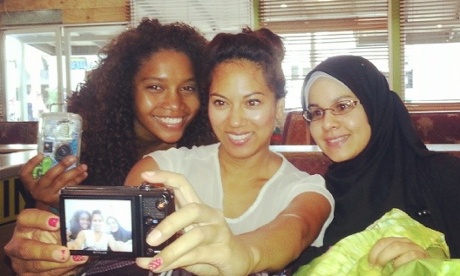
The selfie has become one of the defining cultural markers of our time. Countless reports and columns lament that over a million are taken worldwide each day, claiming the torrent of pictures as proof that we’re becoming more narcissistic and less authentic.
Is it really the case that social media cultivates an extreme form of self-love? I’m part of a team of nine anthropologists from the global social media impact study, on the brink of completing 15 months of fieldwork to explore this question, among others. We’ve been studying social media in small, ordinary towns across eight countries and have over a year’s worth of data to start talking about what people do with social media, how their usage has changed and what they think about it.
Take for example the Caribbean island of Trinidad, where I had my field site. Instead of believing that the truth of a person lies within and what we see on the outside is superficial, Trinidadians value what you see on the surface. What is styled, crafted and created is the truth of a person – inside is where secrets and lies are buried.
Identity then is something that is cultivated and judged by appearance on each and every occasion. “What you see is what you get” is the goal of crafting appearance.
So the language of psychology – of narcissism, introversion and extroversion – is not part of the common vocabulary of the cultural logics of all the countries we are researching over our five-year study: Brazil, Chile, North and South China, India, Italy, Trinidad and the UK. We don’t take any of these cultures’ values as the standard to which others are compared; we treat them all as comparable to each other and not just the former to the UK.
How can we say that selfies in China, India and Turkey are symptomatic of increasing narcissism, when they each have different social dynamics at play and different understandings of personhood? In all of these countries, visibility has different meanings, implications and consequences.
Social media is inherently reciprocal. In Trinidad I learned that selfies are good for you – especially for women. Research from my colleague in the UK, Daniel Miller – and a quick look at my Australian friends’ social media profiles – shows that selfies are only posted by a “type” of person, not personality-wise but looks-wise: young, attractive, feminine, model-thin or glamour model-curvy, the types of women whose images dominate our media.
Among my Trinidadian Facebook friends and my research “informants” – a terrible name, but that’s the term we use for people who inform our research – women of all ages, shapes, class and ethnic backgrounds post selfies, front-on, from the side and showing clothes and styles. Trinidadian women generally have a healthier sense of body image than we have seen with their UK and Australian counterparts.
Their motivation for posting selfies is “because I felt like it”, “I was in a good mood”, “I liked what I was wearing” or “my make-up looked good”. All these reasons remind me that you don’t need to be a celebrity, a well-timed selfie can help you just celebrate yourself.
Of course, each new technology brings with it a new set of anxieties about what it is doing to our mental, emotional and social lives. But the particular anxieties around selfies are from a psychological perspective. We worry that when we have more media with which to express ourselves, our latent narcissism is given voice.
Actually, while we don’t see the algorithms and digital scaffolding behind the construction of Facebook, the social media platform is a social one with customs and rituals. There’s a kind of social exchange – notoriety and fame are accrued through likes and comments – that previous generations of anthropologists would have examined with “pre-modern” or “tribal” societies.
Perhaps the increasing digitisation of social life is symptomatic of society becoming so post-modern that we are starting to strive for a sociality that is actually more pre-modern and egalitarian – instead of becoming more individual we would rather become more social.

